I grow hundreds of pounds of food every year, have no root cellar and no extra refrigerator. So how do I store all my garden vegetables? Like this.
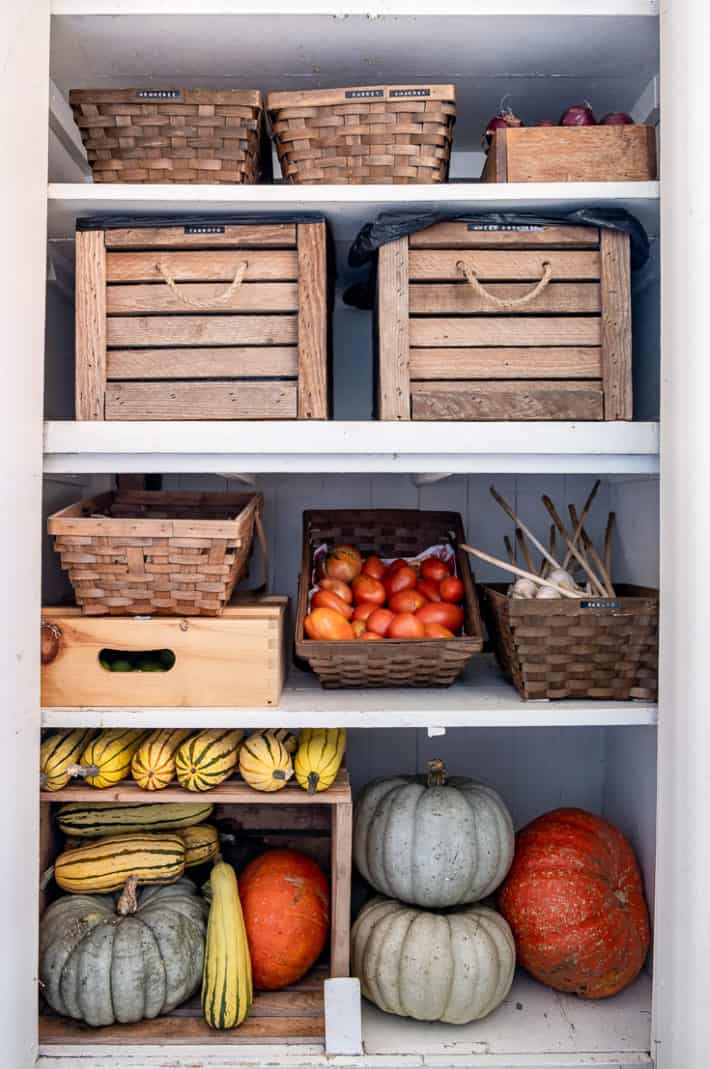
First of all I'm going to say this is how I store my stuff. Someone reading this from an extension office is probably trying to look at the above photo but can't because their eyes are bleeding.
10,000 square feet of climate controlled keeping rooms is the one thing I haven't built because I am not a survivalist or a vegetable wholesaler. I'm just a gal with a lot of potatoes and pumpkins.
Table of Contents
Storing Vegetables is Easy!
You're going to need a shovel, maybe a backhoe, a very large hill (preferably near your kitchen) and about 4 days to dig a root cellar into it. Just kidding. It'll take you weeks. Just kidding. You don't need to do any of that Homesteader Hazel.
I'm going to outline all of the ideal ways to store your vegetables and then your job is to figure out how to get as close to that as possible.
The best areas for long term food storage are cool, but not freezing.
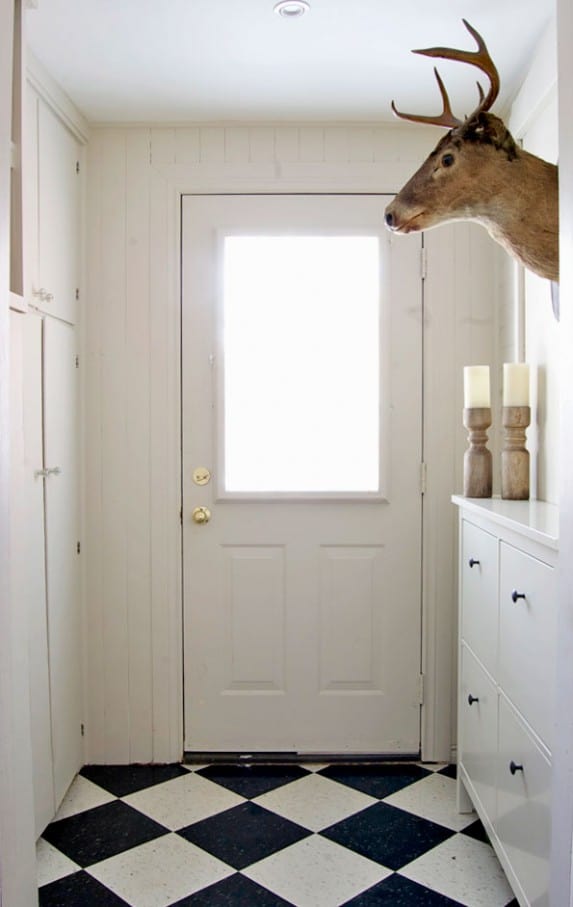
For me the best place to store things is my mudroom. It's uninsulated so it gets VERY cold in my zone 6b winter. To keep everything above freezing I use a space heater.
I also this wireless thermometer so I get alerts if the pantry is getting too cold, hot or humid.
The following are the dream world, ideal conditions for vegetables and how long they'll last in those conditions.
If the table looks screwy on your phone or tablet, turn your device sideways.
Ideal Vegetable Storage Conditions
| TEMP. | HUMIDITY | VEGETABLE TO STORE | MONTHS |
| 32-40 | HIGH (95%) | Beets | 5 |
| 32-40 | HIGH (95%) | Brussels Sprouts | 1 |
| 32-40 | HIGH (95%) | Carrots | 8 |
| 32-40 | HIGH (95%) | Cabbage | 5 |
| 32-40 | HIGH (95%) | Parsnips | 4 |
| 32-40 | LOW (65%) | Onions | 4 |
| 32-40 | HIGH (95%) | Kohlrabi | 2 |
| 40 | HIGH (90%) | Potatoes | 6 |
| 50-60 | LOW (65%) | Winter Squash | 2-6 |
| 50-60 | LOW (65%) | Garlic | 4-8 |
| 55-60 | HIGH (95%) | Sweet Potatoes | 6 |
O.K., so from the table you can see that you have 2 categories. Vegetables that like really cold temperatures, and vegetables that like warmer temperatures.
Cold storage vegetables
Beets, brussels sprouts, carrots, cabbage, parsnips, onions and kohlrabi, potatoes.
Cool storage vegetables
Winter squash, sweet potatoes, garlic.
So WHERE are you going to put all this stuff since we've established you're a ridiculous slacker who doesn't want to dig a root cellar.
COLD STORAGE IN A TYPICAL HOUSE
Cold storage means the temperature is *around* freezing but never below.
- garage
- insulated shed
- uninsulated mudroom
COOL STORAGE IN A TYPICAL HOUSE
Cool storage means much cooler than how you keep your house, but not close to freezing.
- Back of a kitchen cupboard on an outside wall.
- Inside a closet with a door on an outside wall.
- Certain areas of basement.
- Whatever room or area in your house that makes you think ... it's cold in here.
When I first harvest I keep everything in my mudroom until real Canadian winter weather hits. When the weather turns, usually around late October or November, the cold susceptible winter squash and sweet potatoes get moved to
Would you like to save this stuff?
There are a few tricks in addition to the right temperature and humidity to keep your vegetables in good condition.
How to store squash
- Store long term at 10C-15C (50F-60F)
- Cure your squash before trying to store them. They should be cured for 10-14 days at a temperature of 80F and 80% humidity. The easiest way to do that is to put them in a plastic bin with a towel thrown overtop right next to your furnace or heating vent. Check daily.
- Spray or dip the squash into a solution of water with bleach. 10:1 ratio. I just fill my sink up and do a small glug (¼ cup?) of bleach. Dip for a few seconds making sure all the surface has been touched, remove and let dry before storing.
- Check squash for any spots, sounds or signs of rot. Use those squash first and keep them away from all of the good squash.
- Store squash off the ground with air circulation underneath them.
- Don't allow them to touch. If you have to stack them put a layer of newspaper in between them.

This is a horrible example of how to store squash, but that's how they're stored in my house until it gets cold out.
How to store sweet potatoes
- Store squash at 13C-15C (55F-60F)
- Before storing sweet potatoes need to cure to develop a tough skin AND to sweeten. Fresh dug sweet potatoes aren't sweet. Cure for 10 days at a temperature of 85 F with 85% humidity. To get as close as possible put them in a plastic bin with a loose lid or towel across the top near a furnace or register.
- Store sweet potatoes at recommended temperature after the 10 day curing process but DON'T EAT THEM YET. They need another 30 days in storage to develop their trademark sweet flavour.
- Make sure they have air circulation and if layered, separated by newspaper in between layers.
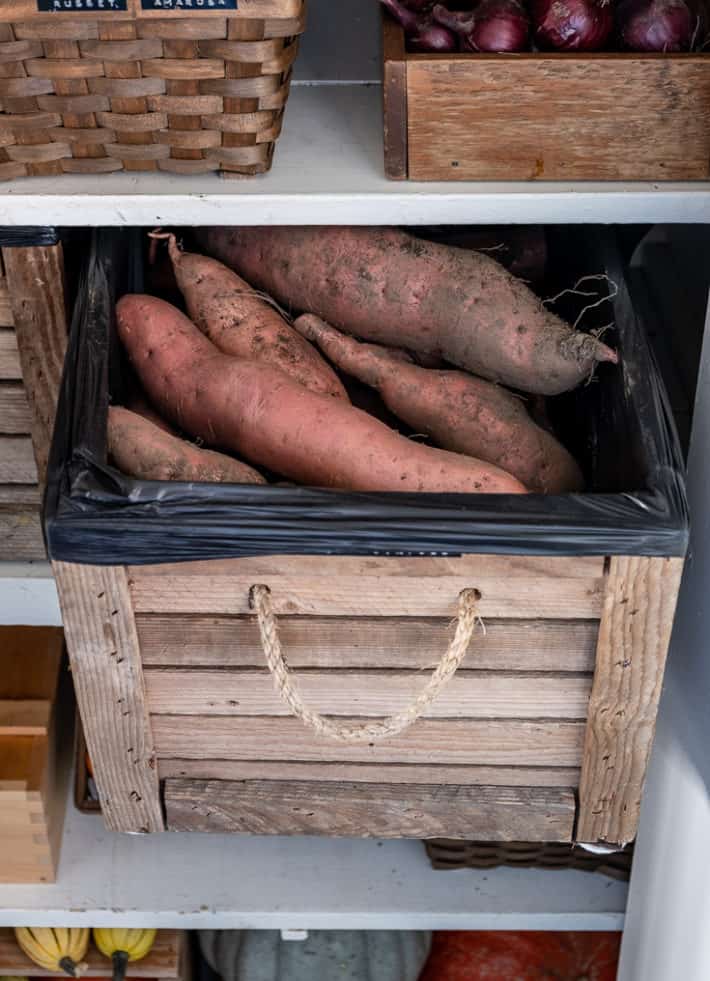
How to store onions
- Store onions between 0C-4C (32F-40F)
- Before storing, cure onions by allowing them to air dry in the shade outside or in a shed. Necks should be completely dried out before you cut them off and store them.
- Any onions with very thick necks are called bullnecks and they will never cure properly, so eat them first.
- Store onions with a lot of air circulation around them so in a slatted wood box or mesh bag.
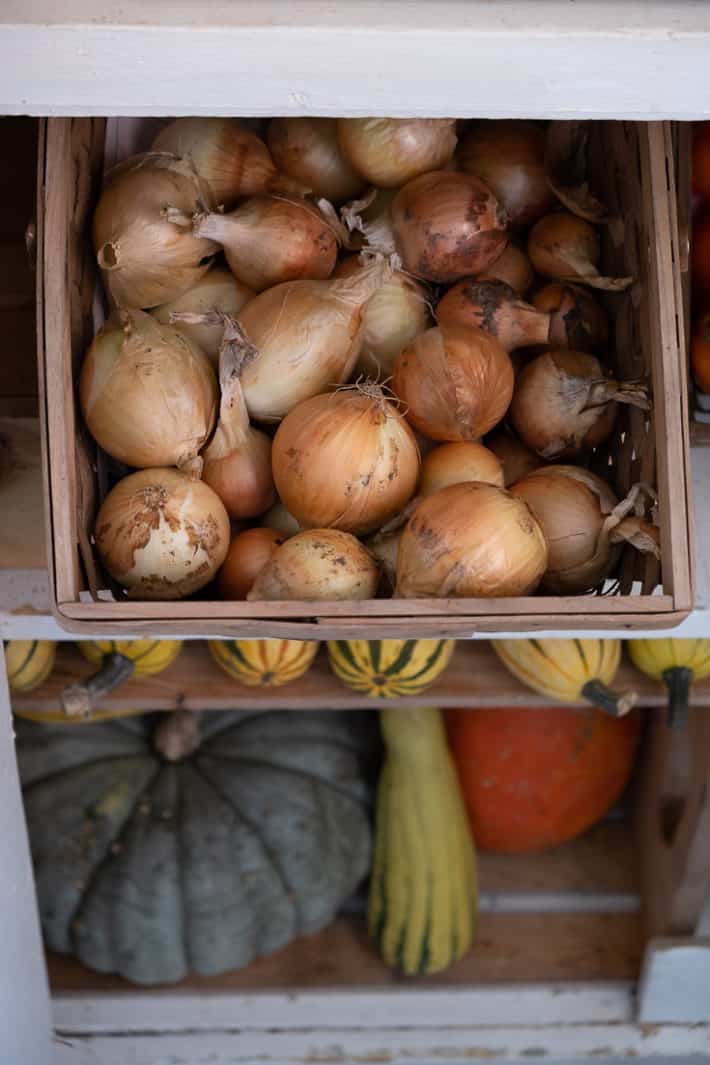
How to store carrots (& beets)
- Store carrots between 0C-4C (32F-40F)
- Cut the entire green portion of the carrot and beet tops off including a tiny bit of the shoulders. If you don't, the carrots will sprout and start to grow again.
- Store purple carrots away from orange carrots. Purple carrots rot faster.
- Store carrots in damp peat moss or sand. The reason for this is so the carrots don't dry out and become limp. Stored this way in a cold area they'll stay perfectly crisp for months.
TIP
Sand is hands down the best way to store carrots and beets to keep them crispy. But peat moss is lighter, easier to work with and much easier to wash off the vegetables before using.

How to store potatoes
- Store potatoes at 4C (40F) if you can. Slightly above is better than slightly below. Once potatoes get near freezing their starches convert to sugars and they get sweet.
- Keep spuds in a ventilated crate like these or mesh bag. You know how potatoes used to be sold in burlap bags? That's a good way to store them.
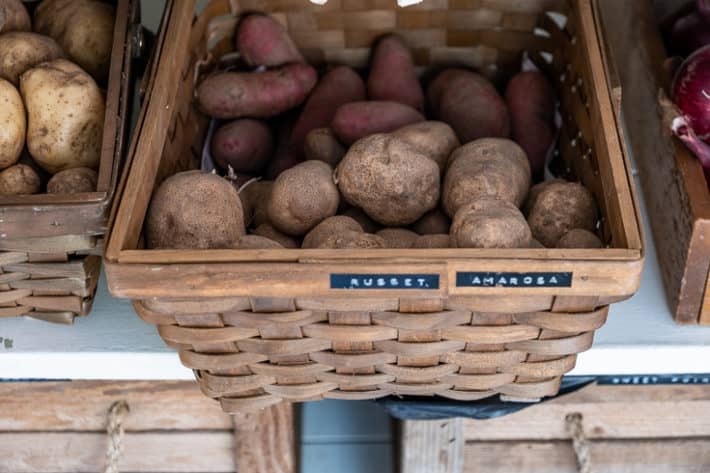
How to store tomatoes.
Don't throw away all those green tomatoes at the end of the season! I know you're sick of them now, but later on you'll be happy you have them.
- Store green tomatoes at 13C-15C (55F-60F) to ripen slowlyyyyyyy. In a month or so.
- Store green tomatoes at around room temperature to get them to ripen more quickly. 1-2 weeks.
- Store barely red tomatoes at around 55-60 to prolong their life and stop them for continuing to ripen too quickly.
- Store tomatoes in a single layer if you can, but no more than a double layer with a thick section of newspaper in between them.
- Check them regularly to get rid of any that are rotting or are showing signs they won't ripen.
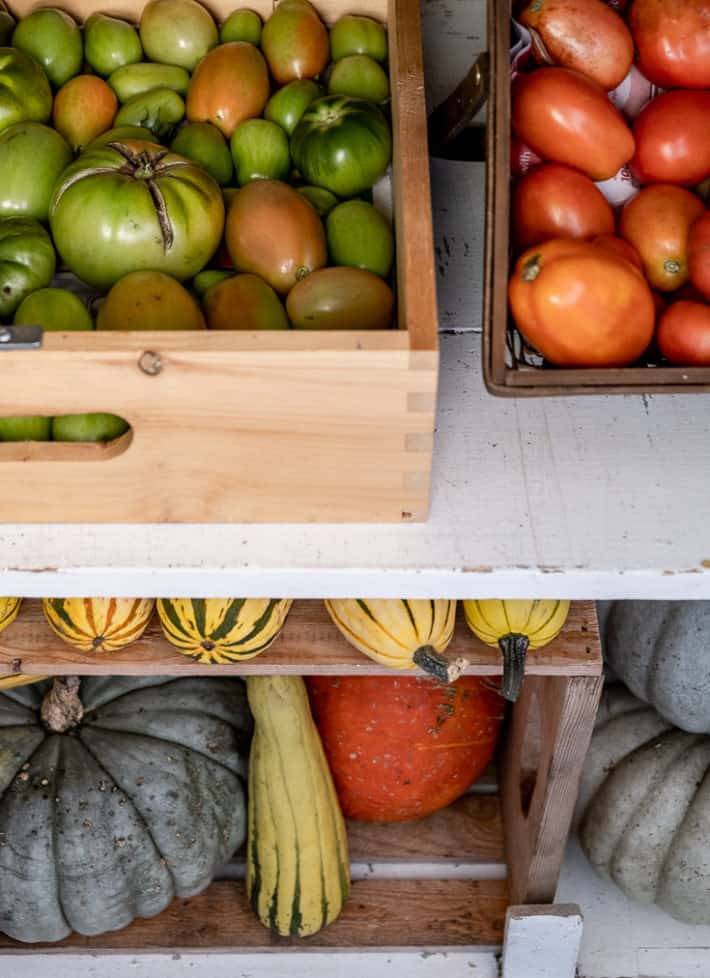
How to store cabbage
- Store cabbage at 0C-4C (32F-40F)
- Store them in the garden as long as possible. Cabbage can handle temperatures as low as -7C (20F) and are perfectly happy right there in the ground.
- If your winter temperatures dip below that pull the cabbage, wrap each in newspaper to help preserve some moisture in them and store.
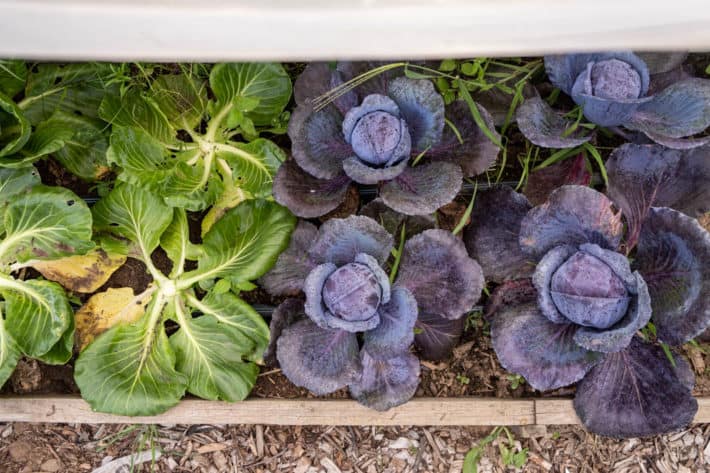
You're never going to be able to get ideal storage conditions for everything so just calm down.
You just need to get close. The closer you get to ideal conditions the longer the vegetables will last. If you notice something starting to rot - get rid of it. Rot creates rot.
Which is a good lesson not only with vegetables, but in life. Good breeds good. And rot breeds rot.
Get rid of the rot and embrace the good for your own long healthy and happy life.


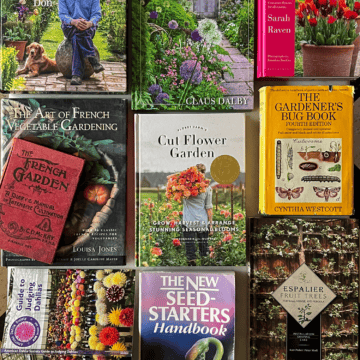
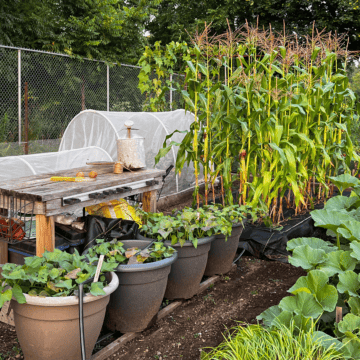
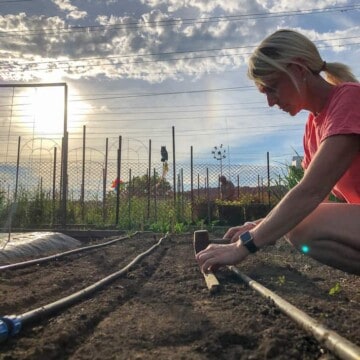
Lynn
Ooh how I loved this post Karen. Have always had trouble hardening of my vegetables, I see now I was not giving them enough time in the shade 🥴.
Teddee E Grace
Makes me wish I still lived in a house. Apartments just don't have storage like this. I still remember the aroma of my grandmother's "fruit cellar." In Northwest Missouri it often doubled as a tornado shelter.
Jane
I haven't grown carrots in years, but I did once upon a time. Since I grew them in my backyard, I just left them in the ground. Then I bagged fallen leaves (we live in an old part of town with mature trees, our maple in front must be around 80 years old) in black garbage bags and piled them up (at lest 2 bags high) on top of and around the carrots before the ground froze. When I needed carrots, I just went out there, removed the bags, and dug some out, then piled the bags back. Since the leaves generated heat as they decomposed, the ground never froze underneath. A heavy snowfall would offer even more insulation.
Karen
That's a fun idea! Maybe I'll try it this year. ~ karen!
Bonnie
I have one question: Why would you (or anyone else to my way of thinking) want to store Brussels sprouts?
Jill
Because like fiddleheads, brussels sprouts are absolutely DELISH when cooked the right way... with butter, prosciutto and/or bacon. Oh Yummm!
Bonnie
I am sure I would love the fiddleheads cooked as you describe, but I don't think that even butter and prosciutto (or bacon) can make me like Brussels sprouts. You can have my share.
Jaimee Saliba
You kinda lost me at "we are home owners." Not all of us, alas. But we still live in homes and eat vegetables.
Karen
Do you know what's funny? The people who are most likely to want to be seen as open, inclusive and non judgemental are always the people who are first to judge. ~ karen!
Alena
Is it bad to store stuff in the garage?
I would prefer not to do as I am not sure if whatever exhaust gases get into food but I literally don't have any other option. My garage gets cold but I am not sure if it gets below freezing. I successfully winterized calla lily rhizomes for a few years in a row (cleaned up, wrapped in layers of newspaper paper and stored on a shelf.
Roisin McIlwrath
I am so jealous of your squash. Something went very wrong with my pumpkins this year.
Eileen Malone
I got a laugh out of the deer head in your mud room. Your such an independent, do it yourself person. I thought "she goes hunting also?" or is she just kidding with us, waiting for a response! I never heard of Jarrahdale pumpkins but will give them a try . Thank you for all your wisdom and humor.
m'liss
How long have you had your allotment? Do you only grow what you eat in a year? I bet you have this down to a science.
No veg garden here, only flowers, but I do shop local seasonal veg at the farmers markets. Can you go over which veg & fruit to store away from each other?
Kristina
This is timely. I had a couple accidental butternut squash plants this summer (care of my good ol' dog Hank, RIP, who I figure pooped out seeds in my yard last winter). I must have gotten about 100 squash off three plants. Hopefully, here in N. California it will be cold enough in my barn to get them to keep. The bleach idea is great. Thanks for that. Also, "just calm down" is the best advice, ever, for anything at all.
Mary W
I wish this post was a book, sorted by veg. With when to harvest, how to harvest, how to cure then store, how to use them recipes. Can you whip that up by next week? I try to make index card notes on all my plants so I can get all this info in one place while dealing with that veg. It goes from seed to recipe or medicinal use. Thanks so much for this post.
Teri on the left coast
And DO NOT store potatoes and onions near each other. Even when you buy them from the store. They are not nice to each other and will rot faster.
Karen
I know, that's one of those rules I was going to mention. But personally I haven't found a huge difference by having them in containers side by side. But yes, you're right the directive is not to put them together. :) ~ karen!
bj
Carrots also do great in vented plastic bags... the closer to freezing temps the better... but don't let them freeze. Clean them good and let them dry before bagging. Even garbage bags work fine as along as you leave the tops open a tad. Milk crates work awesome if you have lots... just put the bagged carrots in the crate and you can stack them as high as you want. i have a commercial potato peeler that i adapted for cleaning the carrots but a high pressure hose works well enough... munch munch
Sue McKnight
This is an absolutely fantastic article. I am so grateful (& enlightened) to read this. Hope any stray Extension Service personal who read this may have learned something (😉). Thank you for taking all the time & effort it must have taken to do this for your readers.
Karen
It did take a bit of time Sue, so thanks for mentioning that! And you're welcome. :) ~ karen!
Bonnie Wilcoxson
I second the question about how to achieve/reasonably control humidity. B
Garth Wunsch
Lots of great info here. When I designed and built our home some 45 years ago, I created a cold room 8’ x 20’ underneath an enclosed/attached outdoor “sunroom”. With a small electric baseboard heater, I keep it at 5º - 8ºC. Works wonderfully well! It’s our food security vault, bomb shelter (has 8” thick concrete roof), and tornado safe house - we had a tornado in 1970... just before I built our shelter!
Carrots in “sharp” damp sand (kind masons use), and potatoes in bushel baskets last way into spring.
Nancy Ann Page
Wow.
margaret
I keep wondering what a person living alone does with those monster pumpkins...
Karen
Eat them. :) I use them to make pumpkin ravioli, pumpkin soup, pumpkin pie ... all of which can be made and frozen. ~ karen!
Emie
You offer up so much interesting information. I don't have a garden any longer bc I'm not physically able but I do enjoy reading about what you do every year. It also makes me appreciate where my food actually comes from..... there are farmers of all sorts out there doing some form of what you're doing to get food to our tables. I do love to frequent farmer's market to support local grower's. But, in the end we do eventually have to rely on commercial growers and I'm thankful to them for what they do. I also believe we should all pay more attention to where out food comes from.... it's important.
Karen
That's true. Where most people are alarmed by the price of vegetables in grocery stores, I'm always amazed by how inexpensive they are considering the amount of work that goes into each one, lol. ~ karen!
ErinG
word.
Dana parhm
I see that many vegetables like a high humidity How do you accomplish that?
Karen
I honestly don't worry about it, lol. There's only so much I can control. Like I said, you just try to get as close as you can. Keeping them closed in a cupboard that has some ventilation helps keep that area with a slightly higher humidity than out in the open. ~ karen!
EmWed
Ooo! Do I spy Jarrahdale pumpkins? They’re my favorite. Beautiful and tasty.
Karen
You do! And they're especially good this year. They taste like they have maple syrup in them! ~ karen